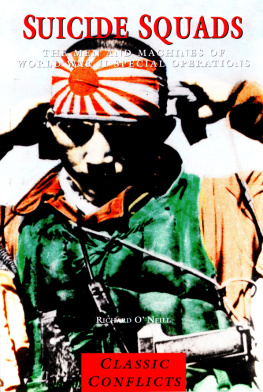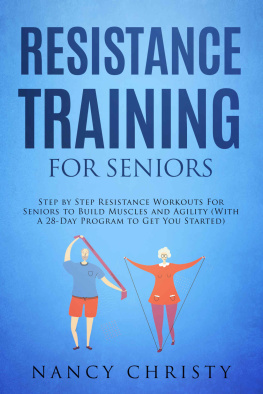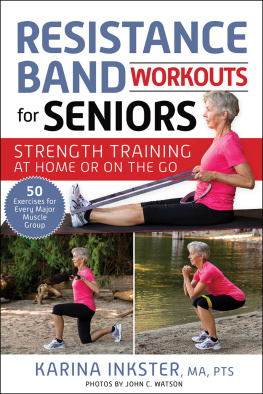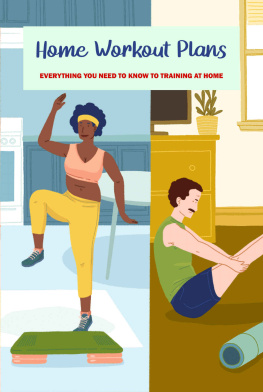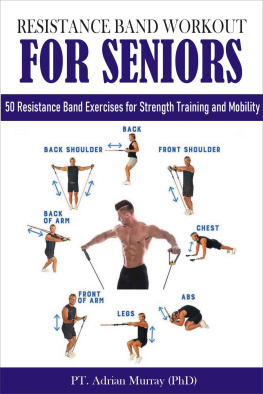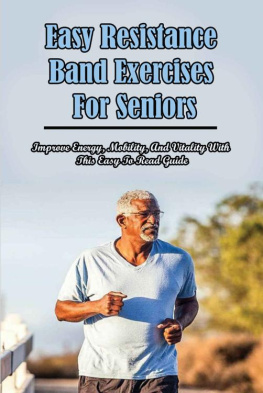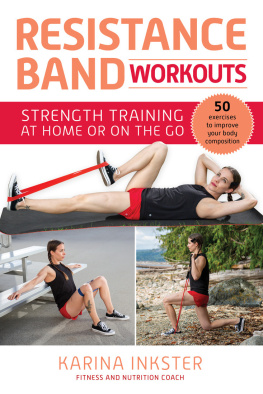Tension
Build a Bigger, Stronger You With Resistance Band Training
Scott O'Neill
Copyright 2021 Scott O'Neill
All rights reserved
No part of this book may be reproduced, or stored in a retrieval system, or transmitted in any form or by any means, electronic, mechanical, photocopying, recording, or otherwise, without express written permission of the publisher.
Cover design by: Craig O'Neill
Contents
Introduction
Its safe to say that anyone interested in health and fitness has recently considered training with resistance bands for future readers, were currently in the midst of the COVID-19 pandemic and most gyms have been forced to close. Theres a wealth of information available online regarding how to use resistance bands. Unfortunately, most of its crap. Its been written by people who dont actually train with bands. They saw an opportunity to get some views and used their expert status to present themselves as an authority.
Ive used bands regularly in my training for several years now. Theyre one of my most valued training tools. If I had to choose, Id rather have access to bands than dumbbells. Your body doesnt know which tool youre using to apply resistance. As long as you can challenge your muscles and engage progressive overload then the tool is irrelevant. Youve possibly heard the maxim resistance is resistance.
Its true, but bands allow you to apply the resistance in ways that would be extremely difficult with conventional weight-based exercises. Bands are great and I want you to receive the benefits Ive gained from them. If you apply the information in this book you will:
Dramatically increase your strength.
Get a massive upper back and shoulders.
Injury-proof your upper body.
The big difference between this and every other band training book is that I dont try and replace conventional exercises. Bands give you access to some unique movements that are impossible with conventional equipment. Well focus on a handful of key movements that only need one band.
I realise most people want access to the exercises straightway and dont care about why bands work so well. With that in mind, the end of the book has optional sections discussing everything that makes bands awesome. If you trust me and just want to train, you dont need to read that bit. If you want to understand why bands are a training cheat-code then check out that section.
The exercises Im going to introduce have been used for decades by strand pullers the name given to people who train with chest expanders. They have their own terminology but I prefer more explanatory names. Ill tell you both the name strand pullers use and what I call them. You can choose which you prefer.
Grips
There are four main ways we will be gripping the band. They all have their uses and I encourage you to try each exercise with a variety of grips. Ill recommend my favourite, but you might find that you get a much better mind-muscle connection with a particular grip.
Supinated Grip
Supinated Grip = palms facing up
Pronated Grip
Pronated Grip = palms facing away
Palm-Out Grip
Palm-Out Grip
Palm-Through Grip
Palm-Through Grip
The Super Six
The majority of your band training will revolve around six very simple exercises. Simple is good. Less time spent learning the exercise = more time spent making gains!
This isnt designed to be done with a light band for super high reps; its possible to do these exercises for heavy singles. As a general rule, I recommend focusing on rep ranges between 520. As the bands are elastic its important that you brace properly. If you arent tight when working with heavy resistance bands, youll get violently pulled into dangerous positions. Ill talk more about bracing later, but in short: take a big breath and keep everything tight.
Exercise 1: Band Pull-Aparts (Front) / Front Chest Pull
Its as simple as it sounds:
Grip your band with a supinated grip.
Hold the band at chest height in front of you.
Keep your arms straight and pull the band apart until its fully stretched.
For extra work, try to finish with a proud chest . You should feel it in your thoracic spine.
Return to the start position under control.
Band Pull-Aparts (Front) start position
Band Pull-Aparts (Front) end position
You should also try this exercise with a pronated grip. I prefer a supinated grip as I get a much stronger mind-muscle connection than the pronated grip. However, a pronated grip makes the exercise much easier.
Its easy to do this exercise incorrectly and receive very little benefit. There are two common mistakes.
Mistake #1 is rushing the reps. You need to feel the muscles work. Start with a very light band and focus on initiating the movement from your upper back. Control the negative.
Dont bounce your reps that adds extra load to your tendons which is a terrible idea if youre just starting out.
Mistake #2 is bending your arms. If you bend your arms you make the exercise much easier. Keep them straight.
Exercise 2: Band Pull-Aparts (45)
Imagine that when you hold a band at chest level the angle is 0 . Holding your arms directly overhead is 90 . For this variation on the band pull-apart, well be working in the middle of those two ranges, approximately the 45 position.
Grip your band with a supinated grip.
Hold the band at the position in front of you.
Keep your arms straight and pull the band apart until its fully stretched.
Return to the start position under control.
Band Pull-Aparts (45) start position
Band Pull-Aparts (45) end position
This is the hardest of the exercises to develop a strong mind-muscle connection on. The supinated grip makes it a lot easier to feel the contraction on this. Once again, start slow and light. Each repetition should involve a forceful contraction of your upper back.
Exercise 3: Band Pull-Aparts (Overhead) / Overhead Downward Pull


